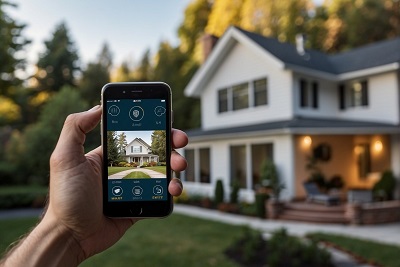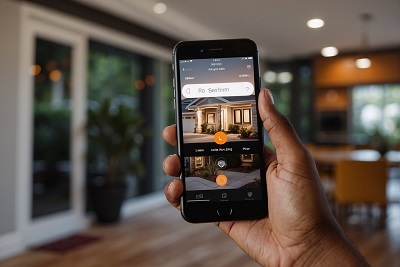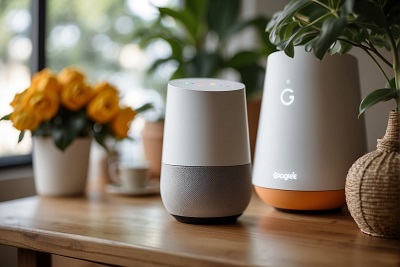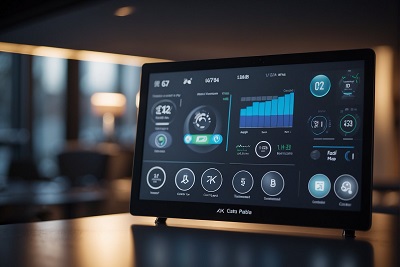As a homeowner, I understand the importance of keeping my home and family safe. One of the best ways to achieve that is by investing in wireless surveillance cameras for home security.
These cameras offer a convenient and modern way to keep an eye on what’s happening around our homes, whether we’re inside or miles away.
Table of Contents
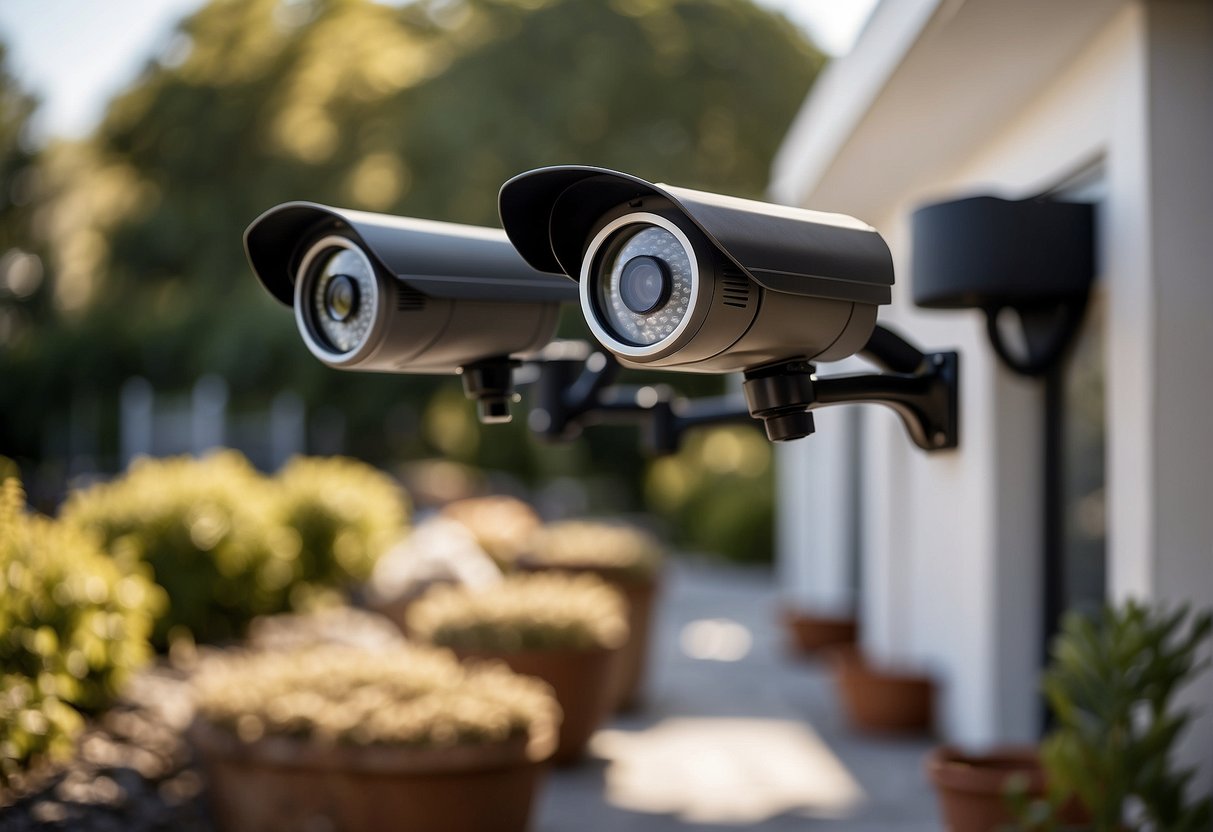
Wireless home surveillance cameras have come a long way over the years, and now there are many reliable options available in the market.
One of the key benefits of these cameras is that they eliminate the need for cluttered wires while offering flexible installation options.
Many cameras feature high-quality video streaming, night vision, and even motion detection capabilities, making it easier to get a clear view of our home at any given moment.
Aside from providing a watchful eye on our property, having wireless surveillance cameras can also be a deterrent to potential intruders.
This, combined with the peace of mind knowing that our home is being well-monitored, makes it a worthwhile investment for every household.
Understanding Wireless Surveillance Cameras
Defining Home Security
As someone who values safety, I find home security to be a significant aspect of protecting my family and possessions. One of the primary components of home security systems is the wireless security camera.
These cameras provide real-time monitoring, ensuring a higher level of peace of mind.
Benefits of Going Wireless
There are several advantages to using wireless home security cameras. First and foremost, they are easier to install, as there are no wires to route or hide.
Wi-Fi-enabled cameras can be placed virtually anywhere, as long as they are within your home network’s range.
Additionally, many wireless cameras are battery-powered, which allows for a more flexible placement and reduced dependence on power outlets.
One of the main benefits of wireless cameras is the convenience they provide when accessing and managing footage. I can monitor my home remotely using a smartphone or other devices, making it easier to keep an eye on things while I’m away.
Technology Behind Wireless Cameras
Wireless cameras operate by transmitting video data over a Wi-Fi network to a designated receiver. This data can be stored using a variety of methods, such as cloud storage or local storage like SD cards.
Battery life is a crucial aspect to consider when choosing a wireless camera, as it affects the device’s longevity and maintenance.
For instance, the Blink Outdoor (3rd Gen) camera has a battery life of up to two years, which minimizes the need for frequent battery changes.
Though wireless cameras offer excellent convenience and flexibility in terms of installation and usage, it’s essential to keep in mind the importance of strong Wi-Fi signals and encryption methods to ensure the privacy and security of your monitoring data.
Features to Consider When Choosing Your Camera

As I’m researching wireless surveillance cameras for my own home, I’ve discovered that there are several key features to consider.
Here are some important factors to keep in mind when selecting the right camera for you and your specific needs.
Video Quality and Resolution
When it comes to securing your home, video quality and resolution play a crucial role. Cameras with higher resolution will capture more details and provide sharper images in your footage.
Look for at least 1080p resolution, but if you want even better clarity, consider going for cameras with 4K resolution.
Night Vision Capabilities
Night vision is another important aspect, as it allows you to monitor your property in low light or complete darkness.
Several cameras come with infrared night vision, which ensures clear black-and-white footage in the dark.
Some models even offer color night vision, giving you more details and higher visibility during nighttime monitoring.
Field of View and Motion Detection
A wider field of view is essential for covering larger areas and capturing more activity. It’s crucial to choose a camera with at least a 110° field of view.
Additionally, most modern cameras come with built-in motion detection. This feature alerts you when there’s movement on your property, and some even offer customizable zones to avoid false alarms.
Storage Options and Cloud Services
Storage options vary between cameras, but they usually boil down to two choices: local storage or cloud storage.
Many cameras have a MicroSD card slot, which allows you to store footage directly on the device. On the other hand, cloud storage services can save your footage remotely and make it accessible from anywhere.
If you’re concerned about subscription costs, seek out cameras that offer free cloud storage or that support local storage without requiring a subscription.
Keep in mind that it’s safest to have both options, in case your local storage is damaged or stolen.
Smart Home Compatibility
Integration with smart home platforms like Amazon Alexa, Google Assistant, Apple HomeKit, and Samsung SmartThings can make your camera even more versatile.
Smart home compatibility enables you to control your camera using voice commands or connect it to other smart home devices for seamless automation.
So, as you can see, there are several essential features to consider when choosing the right wireless surveillance camera for your home.
With these factors in mind, you’re sure to find the perfect solution for your unique needs.
Top Picks for Wireless Surveillance Cameras
Best Overall Cameras
In my experience, some of the best wireless security cameras with top-notch video quality are the Arlo Pro 4 and the Ring Spotlight Cam.
These cameras offer 2K resolution and a wide range of features that make them stand out in the market. With excellent video quality and reliable performance, I believe you can’t go wrong with either of these options.
Cameras for Smart Home Enthusiasts
If you’re a smart home enthusiast like me and want to integrate your wireless cameras with other devices, I recommend the Google Nest and Arlo Ultra cameras.
They offer seamless compatibility with home automation systems like Amazon Echo, Google Home, and Samsung SmartThings.
With these cameras, you can easily monitor your home using your smart devices, making home surveillance more convenient and enjoyable.
Best Value Cameras
For those who are budget-conscious like myself, there are still great wireless cameras that won’t break the bank.
The Eufy and Wyze cams offer good video quality and useful features at an affordable price. In my opinion, these cameras are perfect for those who want reliable home surveillance without having to spend a fortune.
Specialized Cameras for Pets or Elderly
If you’re looking for cameras specifically designed to monitor pets or elderly family members, I suggest the Arlo and Blink Outdoor cameras.
These wireless cameras often come with specialized features, such as two-way audio and motion alerts, that make it easier for you to keep an eye on your loved ones, ensuring their safety and well-being.
I hope this friendly guide has shed some light on the top wireless surveillance camera options available for different needs and budgets.
Good luck in your search for the perfect camera to secure your home!
Installation and Maintenance
Setting Up Your Wireless Camera
Setting up your wireless camera is generally a simple process. Most cameras come with easy-to-follow instructions, so you can do it yourself without the need for professional installation.
To get started, position the camera in your desired location, either by mounting it or placing it on a flat surface.
Next, you should connect the camera to Wi-Fi and sync it with any other connected devices it works with, such as smart sensors or video doorbells.
Optimizing Camera Performance
To ensure optimal performance of your wireless camera, it’s essential to choose the right location.
Based on customer reviews and expert suggestions, it’s a good idea to place cameras at high-traffic areas, such as driveways or near entrances, as this helps increase visibility and deters potential intruders.
Additionally, you’ll want to ensure your Wi-Fi signal is strong in the area where you place your camera, as this will help provide smooth live video streaming.
Most wireless cameras come with a mobile app, which allows you to view live video, receive notifications, and adjust settings remotely.
Whether you’re at home or on the go, it’s always a good idea to regularly check your app and make any necessary adjustments to your camera’s settings to maintain optimal performance.
Maintenance and Battery Life
Battery life is an essential factor to consider when selecting a wireless camera. Many cameras use rechargeable batteries, so it’s crucial to periodically check and recharge your device to ensure continuous operation.
Some cameras also offer solar charging options, which can help extend battery life further.
In addition to battery maintenance, be sure to clean your camera lens periodically to ensure clear image quality. Use a soft microfiber cloth to gently wipe away dust, dirt, and any other debris that may accumulate over time.
Regularly updating your camera’s firmware is also recommended, as this helps ensure your device stays up-to-date and secure.
By following these simple tips for installation and maintenance, I’m confident that you’ll get the most out of your wireless home security camera and enjoy the peace of mind it provides.

